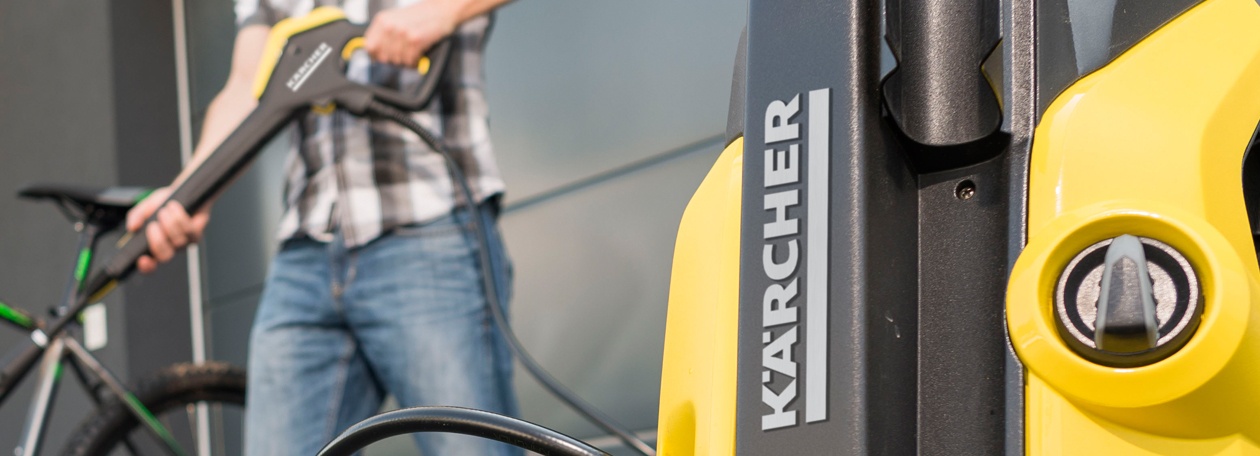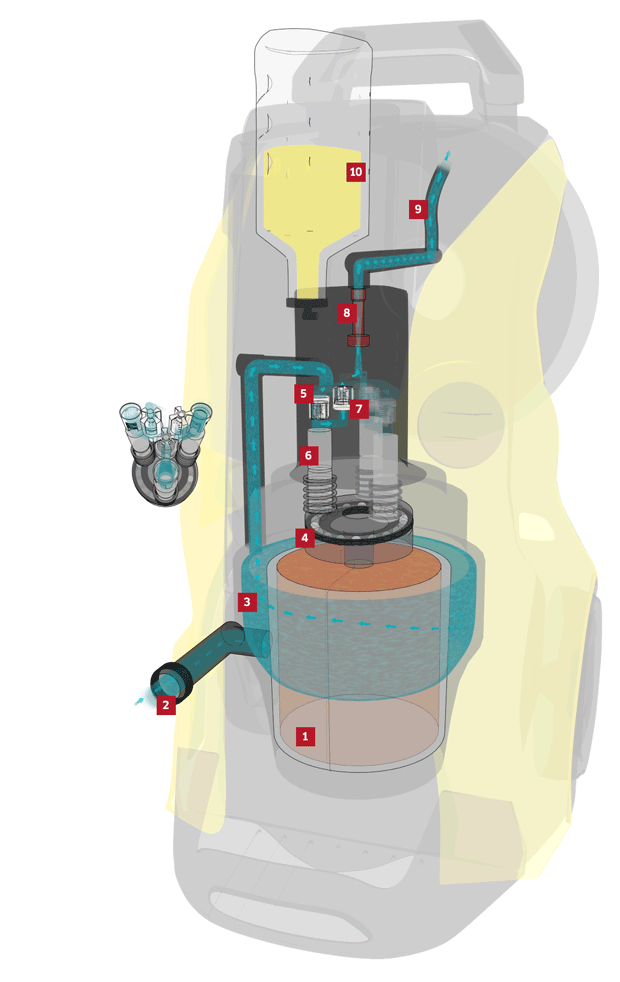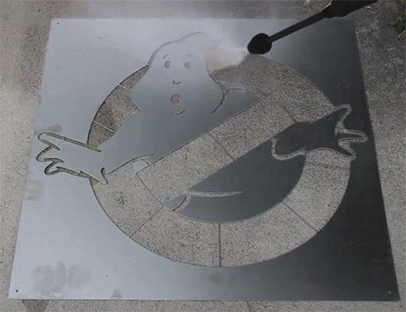How does a pressure washer work?
Anyone who has used a pressure washer before knows that cleaning outdoors can be a lot of fun. They can be used to clean practically everything on or around the house in next to no time. But how does a pressure washer actually work? And how is it made? Take a look inside the cleaning machine and come with us on a journey to the Kärcher factory in the Swabian town of Obersontheim, where we make our K 7 Full Control pressure washer.

How does a pressure washer work?
The animated graphics illustrate the Kärcher K 7 Full Control for you. Where is the motor, where does the water go once it enters the pressure washer through the garden hose, and how is the pressure created?
Example: the Kärcher K 7 Full Control
The heart of every pressure washer is its electric motor, which drives the pump system [1]. In order for the pumps to work correctly, they need water, which is provided, for example, by a garden hose [2]. Before it is put under pressure, the water flows into a double-walled casing around the motor, which cools it down [3]. This reduces noise and also extends the device's run time.
The motor drives a wobble plate, which moves the three pistons up and down [4]. The K 7 Full Control features a total of three pistons, which each work with one suction and one pressure valve. The downward motion of the pistons [6] draws the water through a suction valve [5] and into the cylinder or piston chamber. When the piston moves up again, it pushes the water out of the piston chamber and through a pressure valve [7] towards the injector.
Cleaning agent [10] is added to the injector [8] if required. The water then flows out of the pump [9] to the high-pressure gun.
Of course, in real time, this all happens so fast that once you have turned on the device, you can immediately press the trigger to start cleaning. The pressure washer pictured here features an LED display on the trigger gun, which shows the pressure level selected, as well as an example application. This makes it easy to find the right setting for every application.
Quite apart from the outstanding cleaning performance, cleaning with a pressure washer also saves water, because while around 3,500 litres flow through a garden hose in an hour, a pressure washer uses just 400 to 600 litres. The saving effect is compounded since the high water pressure speeds up the work.

How is a pressure washer made?
Creative applications of all sizes

Reverse graffiti – legal and impressive
A pressure washer can also be used by artists. With small templates or elaborate technique, you can create impressive images. Reverse graffiti does not add anything to surfaces, but instead removes dirt.
In this case, for once: the dirtier the better. Because more dirt makes the clean art easier to see. The surface should also be as smooth and even as possible, which is why concrete and natural stone surfaces produce the best results. It is important to note that unlike classic graffiti, reverse graffiti simply cleans up the surface, and the art may disappear within a few weeks depending on the amount of dirt the surface collects over time. However, artists should still ask for a permit to use public surfaces for reverse graffiti. But on your own property, your driveway, house wall, or in your garage, you can be as creative as you like.
Kärcher already has a lot of experience with reverse graffiti. Together with the artist Klaus Dauven, we have created impressive artworks in places like the Oleftalsperre, a dam in Hellenthal in the Eifel region of Germany (see below) and on the Matsudagawa Dam near the Japanese city of Ashikaga – all done with pressure washers.

Pressure Washers by Kärcher
You can find an overview of our wide range of pressure washers via the following links.













